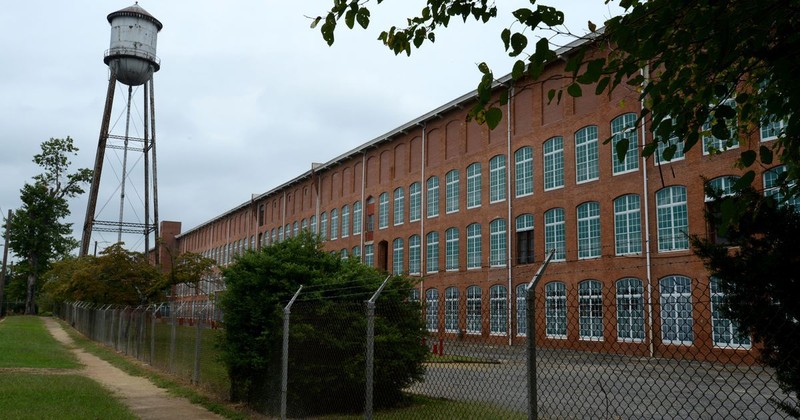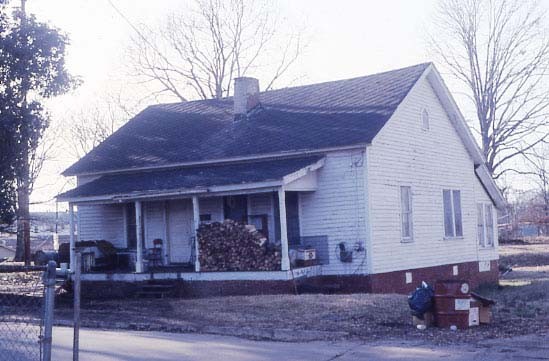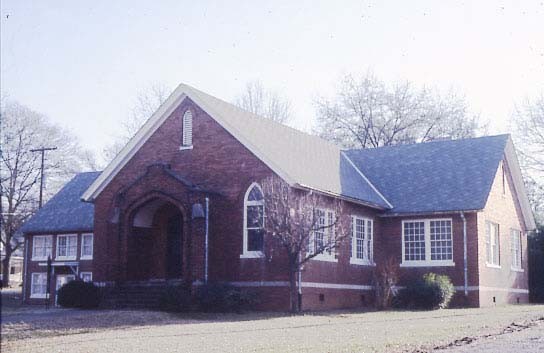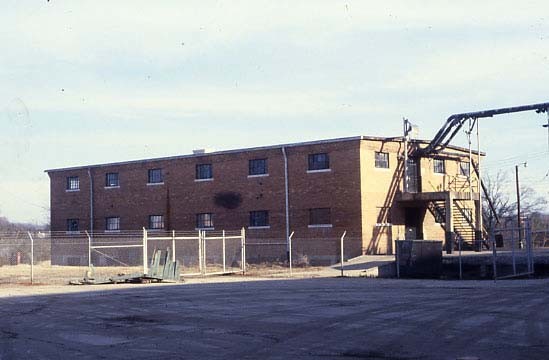Woodside Cotton Mill Village
Introduction
Text-to-speech Audio
The Woodside Mill was the cornerstone of the business empire in Greenville, SC. This mill was built by John T. Woodside in the year 1902. Woodside Mill would continue to grow, becoming the largest complete cotton mill in the United States, at its biggest period of growth it would come to house over 120,000 spindles. It would grow to become a village of houses, baseball fields, and churches. It was listed on the National Register of Historic Places in 1987.
Images
The main operating mill building.

An original house located in the mill village.

A church located in the mill village.

The mill's wastehouse.

Backstory and Context
Text-to-speech Audio
During the early 1900s, Greenville, SC was booming with textile entrepreneurs. A man by the name of John T. Woodside and his two brothers would go one to create the largest cotton mill in the United States, Woodside Mill. Woodside mill was first constructed in the year 1902 and located on the outskirts of Greenville, SC. The mill started of running 11,000 spindles but in the year 1904 the brothers would enlarge the mill to 33,000 spindles. John Woodside's brothers would also go on to produce mills. In the year of 1912 all the mills would become consolidated together. This would make Woodside mill the largest complete mill of its time running 120,000 spindles.
Following the creation of Woodside Mill, an entire village would be created. As the business and economic revenue began to rise so did the amount of workers and buildings in the village. The village would grow to contain many houses, two churches, a baseball field, recreational building, and an on site store. The village was divided up into four sections.The baseball field, was particularly a point of interest in the village and was part of the local textile association of baseball teams. It helped bring the mill communities together, giving them a sense of pride.
The main mill, was located on the corner of the village near Woodside Ave. and East Main Street. The mill was one large rectangle, and had four stories. It was made out of bricks and backed by lumber on the inside. The mill had many large windows on both sides of the building. Inside the mill there was a boiler room, pump room, engine room, and a restroom for workers. Connected to the mill was a 150 feet tall brick smokestack. The Woodside mill's main building housed over 112,000 spindles producing around 40,000 miles of cloth each year.
Throughout the years it served as a historical reminder of the advancement of Greenville as well as the textile industry. During the great depression, John Woodside lost ownership of the mill. The Beatie family purchased the mill from them in the year of 1936 and not long after the mill would be purchased by Dan River Mills in 1956. It was sold too Alchem Chemical in 1984, and Eugene Stone Manufacturing in 1987.The building was set to be reconstructed into apartments in early 2012 however the plan fell through. There have been plans to annex the building but nothing has been put into place. This village was added to the list of National Historical Places in 1987.
Following the creation of Woodside Mill, an entire village would be created. As the business and economic revenue began to rise so did the amount of workers and buildings in the village. The village would grow to contain many houses, two churches, a baseball field, recreational building, and an on site store. The village was divided up into four sections.The baseball field, was particularly a point of interest in the village and was part of the local textile association of baseball teams. It helped bring the mill communities together, giving them a sense of pride.
The main mill, was located on the corner of the village near Woodside Ave. and East Main Street. The mill was one large rectangle, and had four stories. It was made out of bricks and backed by lumber on the inside. The mill had many large windows on both sides of the building. Inside the mill there was a boiler room, pump room, engine room, and a restroom for workers. Connected to the mill was a 150 feet tall brick smokestack. The Woodside mill's main building housed over 112,000 spindles producing around 40,000 miles of cloth each year.
Throughout the years it served as a historical reminder of the advancement of Greenville as well as the textile industry. During the great depression, John Woodside lost ownership of the mill. The Beatie family purchased the mill from them in the year of 1936 and not long after the mill would be purchased by Dan River Mills in 1956. It was sold too Alchem Chemical in 1984, and Eugene Stone Manufacturing in 1987.The building was set to be reconstructed into apartments in early 2012 however the plan fell through. There have been plans to annex the building but nothing has been put into place. This village was added to the list of National Historical Places in 1987.
Sources
Burns, Amy Clarke. Q&Amy: New plans for Woodside Mill?. Greenville Online. October 23, 2015. Accessed March 14, 2017. http://www.greenvilleonline.com/story/news/2015/09/23/woodside-mill-development-greenville/72560666/.
Huff, Archie Vernon. Greenville: The History of the City and County in the South Carolina Piedmont. Columbia, South Carolina. University of South Carolina Press, 1995.
Woodside Mill-Greenville, South Carolina. South Carolina Information Highway. Accessed March 14, 2017. http://www.sciway.net/sc-photos/greenville-county/woodside-mill.html.
Photo Credit: http://www.nationalregister.sc.gov/greenville/S10817723036/
Huff, Archie Vernon. Greenville: The History of the City and County in the South Carolina Piedmont. Columbia, South Carolina. University of South Carolina Press, 1995.
Woodside Mill-Greenville, South Carolina. South Carolina Information Highway. Accessed March 14, 2017. http://www.sciway.net/sc-photos/greenville-county/woodside-mill.html.
Photo Credit: http://www.nationalregister.sc.gov/greenville/S10817723036/
